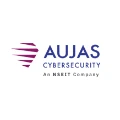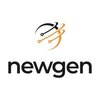
i
Filter interviews by
Aujas Cybersecurity-NuSummit company Interview Questions and Answers
31 Interview questions
Configuring a Nessus scan involves setting up targets, selecting scan types, and scheduling scans for vulnerability assessment.
1. Log in to the Nessus interface and navigate to the 'Scans' tab.
2. Click on 'New Scan' to create a new scan configuration.
3. Choose a scan template, such as 'Basic Network Scan' or 'Advanced Scan'.
4. Enter the target IP addresses or hostnames in the 'Targets' section.
5. Configure scan se...
CVE stands for Common Vulnerabilities and Exposures, a system for identifying and cataloging security vulnerabilities.
CVE provides a reference-method for publicly known information-security vulnerabilities and exposures.
Each CVE entry includes a unique identifier, a description, and references to related vulnerability reports.
For example, CVE-2021-34527 refers to a critical vulnerability in Microsoft Windows Print...
Configuration audit is the process of reviewing and verifying system configurations for compliance and security standards.
Ensures systems are configured according to security policies.
Identifies unauthorized changes or vulnerabilities in configurations.
Examples include checking firewall rules, user permissions, and software settings.
Can be automated using tools like Nessus or OpenVAS for efficiency.
Regular audits ...
Vulnerability Assessment identifies weaknesses; Penetration Testing exploits them to assess security strength.
Vulnerability Assessment is a systematic review of security weaknesses in an information system.
Penetration Testing simulates an attack to exploit vulnerabilities and assess the system's defenses.
Example of Vulnerability Assessment: Using tools like Nessus to scan for known vulnerabilities.
Example of Penet...
A vulnerability scan report identifies security weaknesses in systems, helping organizations improve their defenses.
A vulnerability scan is like a health check for your computer systems, identifying potential issues before they can be exploited.
The report lists vulnerabilities, which are weaknesses that could be exploited by attackers, similar to how a doctor identifies health risks.
Each vulnerability is categoriz...
Nessus Scan involves several steps to identify vulnerabilities in systems and networks effectively.
1. Define the Scope: Determine which systems or networks to scan, e.g., specific IP ranges or subnets.
2. Configure the Scan: Set up scan parameters, including credentials for authenticated scans to get deeper insights.
3. Select Scan Type: Choose from various scan types like Basic Network Scan, Web Application Tests, ...
Authenticated scans use valid credentials to assess security, while unauthenticated scans do not.
Authenticated scans provide a deeper insight into vulnerabilities by simulating an insider attack.
Unauthenticated scans assess the security posture from an external perspective, identifying exposed services.
Example of authenticated scan: Using admin credentials to check for misconfigurations in a web application.
Exampl...
Scan failures can occur due to various technical and operational issues affecting the scanning process.
Network connectivity issues can prevent the scanner from accessing target systems.
Insufficient permissions may lead to incomplete scans; for example, a lack of admin rights on a server.
Outdated scanning tools may not recognize new vulnerabilities or systems.
Firewall or security settings might block the scanning t...
Risk assessment is the process of identifying, evaluating, and prioritizing risks to minimize their impact on an organization.
Identify assets: Determine what needs protection, such as sensitive data or critical systems.
Evaluate threats: Analyze potential threats like cyber attacks, natural disasters, or insider threats.
Assess vulnerabilities: Identify weaknesses in systems or processes that could be exploited.
Dete...
CVSS2 and CVSS3 are frameworks for assessing the severity of security vulnerabilities, with CVSS3 offering more granularity.
CVSS2 has a base score range of 0-10, while CVSS3 expands this to include more metrics, allowing for a more nuanced score.
CVSS3 introduces new metrics like 'Exploit Code Maturity' and 'Remediation Level', which help in understanding the exploitability of vulnerabilities.
CVSS3 separates 'User ...
Aujas Cybersecurity-NuSummit company Interview Experiences
25 interviews found
I applied via LinkedIn and was interviewed before Sep 2022. There were 4 interview rounds.

Just basic knowledge of your profile
(4 Questions)
- Q1. Little more detailed but still only the basics.
- Q2. HTTP cookie attributes
- Q3. Security Headers
- Q4. Owasp Top 10 for web, api and mobile
- Ans.
OWASP Top 10 is a list of the top 10 most critical security risks for web, API, and mobile applications.
Injection: SQL injection, NoSQL injection, Command injection
Broken Authentication: Weak passwords, Session management issues
Sensitive Data Exposure: Insecure data storage, Lack of encryption
XML External Entities (XXE): Parsing XML input from untrusted sources
Broken Access Control: Unauthorized access to resources
Secu...
(1 Question)
- Q1. Salary negotiations
Interview Preparation Tips
Skills evaluated in this interview
I appeared for an interview in Jun 2025, where I was asked the following questions.
- Q1. Default Port for Nessus Login, Linux Remote Login, Windows Remote Login.
- Ans.
Default ports for Nessus, Linux, and Windows remote logins are essential for network security and management.
Nessus Login: Default port is 8834, used for web-based interface access.
Linux Remote Login: Default port is 22, used for SSH (Secure Shell) connections.
Windows Remote Login: Default port is 3389, used for Remote Desktop Protocol (RDP).
- Q2. What is Rule Based Scan?
- Ans.
A Rule Based Scan uses predefined rules to identify vulnerabilities or threats in systems and networks.
Utilizes a set of rules or signatures to detect known threats.
Commonly used in antivirus software to identify malware.
Example: A rule may specify that files with certain extensions are suspicious.
Can be applied in network security to monitor traffic patterns.
Example: Rules can flag unusual login attempts based on IP a...
- Q3. Difference Between CVSS2 and CVSS3?
- Ans.
CVSS2 and CVSS3 are frameworks for assessing the severity of security vulnerabilities, with CVSS3 offering more granularity.
CVSS2 has a base score range of 0-10, while CVSS3 expands this to include more metrics, allowing for a more nuanced score.
CVSS3 introduces new metrics like 'Exploit Code Maturity' and 'Remediation Level', which help in understanding the exploitability of vulnerabilities.
CVSS3 separates 'User Inter...
- Q4. What is Risk Assessment?
- Ans.
Risk assessment is the process of identifying, evaluating, and prioritizing risks to minimize their impact on an organization.
Identify assets: Determine what needs protection, such as sensitive data or critical systems.
Evaluate threats: Analyze potential threats like cyber attacks, natural disasters, or insider threats.
Assess vulnerabilities: Identify weaknesses in systems or processes that could be exploited.
Determine...
- Q5. What are reasons for the failure of scan?
- Ans.
Scan failures can occur due to various technical and operational issues affecting the scanning process.
Network connectivity issues can prevent the scanner from accessing target systems.
Insufficient permissions may lead to incomplete scans; for example, a lack of admin rights on a server.
Outdated scanning tools may not recognize new vulnerabilities or systems.
Firewall or security settings might block the scanning traffi...
- Q6. Difference between Authenticated Scan and Unauthenticated Scan.
- Ans.
Authenticated scans use valid credentials to assess security, while unauthenticated scans do not.
Authenticated scans provide a deeper insight into vulnerabilities by simulating an insider attack.
Unauthenticated scans assess the security posture from an external perspective, identifying exposed services.
Example of authenticated scan: Using admin credentials to check for misconfigurations in a web application.
Example of ...
- Q7. Difference Between Vulnerability Assessment and Penetration Testing.
- Ans.
Vulnerability Assessment identifies weaknesses; Penetration Testing exploits them to assess security strength.
Vulnerability Assessment is a systematic review of security weaknesses in an information system.
Penetration Testing simulates an attack to exploit vulnerabilities and assess the system's defenses.
Example of Vulnerability Assessment: Using tools like Nessus to scan for known vulnerabilities.
Example of Penetratio...
- Q8. What is Configuration Audit?
- Ans.
Configuration audit is the process of reviewing and verifying system configurations for compliance and security standards.
Ensures systems are configured according to security policies.
Identifies unauthorized changes or vulnerabilities in configurations.
Examples include checking firewall rules, user permissions, and software settings.
Can be automated using tools like Nessus or OpenVAS for efficiency.
Regular audits help ...
- Q9. What is CVE?
- Ans.
CVE stands for Common Vulnerabilities and Exposures, a system for identifying and cataloging security vulnerabilities.
CVE provides a reference-method for publicly known information-security vulnerabilities and exposures.
Each CVE entry includes a unique identifier, a description, and references to related vulnerability reports.
For example, CVE-2021-34527 refers to a critical vulnerability in Microsoft Windows Print Spoo...
- Q10. How to configure a Nessus Scan?
- Ans.
Configuring a Nessus scan involves setting up targets, selecting scan types, and scheduling scans for vulnerability assessment.
1. Log in to the Nessus interface and navigate to the 'Scans' tab.
2. Click on 'New Scan' to create a new scan configuration.
3. Choose a scan template, such as 'Basic Network Scan' or 'Advanced Scan'.
4. Enter the target IP addresses or hostnames in the 'Targets' section.
5. Configure scan setting...
- Q11. Which steps are involved in Nessus Scan?
- Ans.
Nessus Scan involves several steps to identify vulnerabilities in systems and networks effectively.
1. Define the Scope: Determine which systems or networks to scan, e.g., specific IP ranges or subnets.
2. Configure the Scan: Set up scan parameters, including credentials for authenticated scans to get deeper insights.
3. Select Scan Type: Choose from various scan types like Basic Network Scan, Web Application Tests, etc.
4...
- Q12. How do you explain to a non IT guy about the Vulnerability Scan Report?
- Ans.
A vulnerability scan report identifies security weaknesses in systems, helping organizations improve their defenses.
A vulnerability scan is like a health check for your computer systems, identifying potential issues before they can be exploited.
The report lists vulnerabilities, which are weaknesses that could be exploited by attackers, similar to how a doctor identifies health risks.
Each vulnerability is categorized by...
Interview Preparation Tips
I appeared for an interview in Jun 2025, where I was asked the following questions.
- Q1. Topics on java and security related
- Q2. Behavioral and communication based
I applied via Naukri.com and was interviewed in Jul 2024. There was 1 interview round.
(2 Questions)
- Q1. Where we can perform Insecure Deserialization?
- Ans.
Insecure deserialization can occur in various places such as web applications, APIs, and network services.
Web applications that accept user input and deserialize it without proper validation
APIs that deserialize data from external sources without proper security measures
Network services that deserialize data from untrusted sources
- Q2. If you got a bufferoverflow atack how you will validate it?
- Ans.
To validate a buffer overflow attack, I would analyze the program's memory usage, check for abnormal behavior, and use debugging tools.
Analyze the program's memory usage to identify any unexpected changes or overflows
Check for abnormal behavior such as crashes, unexpected output, or system instability
Use debugging tools like gdb or Valgrind to trace the program's execution and identify the source of the buffer overflow
...
Interview Preparation Tips
I appeared for an interview in Dec 2024, where I was asked the following questions.
- Q1. What are the possible security threats?
- Ans.
Cybersecurity threats include malware, phishing, insider threats, and more, posing risks to data integrity and privacy.
Malware: Software designed to harm or exploit systems, e.g., ransomware encrypting files for ransom.
Phishing: Deceptive emails or messages tricking users into revealing sensitive information, e.g., fake bank alerts.
Insider Threats: Employees or contractors misusing access to compromise data, e.g., stea...
- Q2. Scenario based remediation for few checks in CIS benchmarks
- Q3. Which configuration files are important for configuration audit
- Ans.
Key configuration files for audits include system, application, and network settings to ensure compliance and security.
System configuration files (e.g., /etc/sysctl.conf on Linux) for kernel parameters.
Application configuration files (e.g., web server configs like httpd.conf) for security settings.
Network configuration files (e.g., /etc/network/interfaces) for network interface settings.
Database configuration files (e....
- Q4. What is the need for vulnerability management
- Ans.
Vulnerability management is essential for identifying, assessing, and mitigating security weaknesses in systems and networks.
Proactive identification of vulnerabilities helps prevent potential breaches, such as the Equifax data breach in 2017.
Regular scanning and assessment ensure compliance with industry standards like PCI-DSS and HIPAA.
Prioritizing vulnerabilities based on risk helps allocate resources effectively, f...
- Q5. How can we decide the criticality of open points
- Ans.
Assessing open points' criticality involves evaluating risk, impact, and likelihood of exploitation.
Identify the asset affected: Critical systems like databases or servers should be prioritized.
Evaluate the potential impact: Consider data loss, financial cost, or reputational damage.
Assess likelihood of exploitation: Analyze existing threats and vulnerabilities in the environment.
Consider regulatory requirements: Compl...
Interview Preparation Tips
I appeared for an interview in Oct 2024, where I was asked the following questions.
- Q1. TCP and UDP FIREWALL
- Q2. ALL KNOWN PORT NUMBER
- Ans.
Known port numbers are standardized network ports used for specific protocols and services in computer networking.
Port 80: HTTP (Hypertext Transfer Protocol) for web traffic.
Port 443: HTTPS (HTTP Secure) for secure web traffic.
Port 21: FTP (File Transfer Protocol) for file transfers.
Port 22: SSH (Secure Shell) for secure remote login.
Port 25: SMTP (Simple Mail Transfer Protocol) for email sending.
- Q3. DOS AND DDOS
- Q4. SOCIAL ENGINEERING
- Q5. MALWARE, 3WAY HANDSHAKING
- Q6. CASE STUDY of any events
Associate Director Delivery Interview Questions & Answers
posted on 26 Jul 2024
I applied via Approached by Company and was interviewed in Jan 2024. There were 2 interview rounds.
(2 Questions)
- Q1. Previous and current Experience
- Q2. Interest to work from Mumbai Location
- Ans.
I am interested in working from the Mumbai location due to the vibrant work culture and opportunities for growth.
Exciting work culture in Mumbai
Opportunities for growth and development
Proximity to key clients and projects
Networking opportunities in a major business hub
Many scenario based questions, and how to handle team, customers and peers
Interview Preparation Tips
I applied via Recruitment Consulltant and was interviewed in Nov 2023. There were 5 interview rounds.

(1 Question)
- Q1. About VAPT and day to day process
- Ans.
VAPT involves identifying vulnerabilities in systems through testing and assessment to enhance security measures.
VAPT stands for Vulnerability Assessment and Penetration Testing.
Vulnerability Assessment identifies weaknesses in systems, while Penetration Testing simulates attacks.
Daily tasks may include scanning networks for vulnerabilities using tools like Nessus or OpenVAS.
Conducting manual testing to exploit vulnera...
(1 Question)
- Q1. Deep about VA tools and management and CIS benchmark
(1 Question)
- Q1. Client round about VA
(1 Question)
- Q1. Final round HR process strength weakness. About compny previous organizations why left organization.
I applied via Campus Placement and was interviewed in Dec 2023. There were 2 interview rounds.
It was an online mcq test with coding question as well
(2 Questions)
- Q1. Write an sql query. It was very basic
- Ans.
An SQL query is a command used to interact with databases, allowing data retrieval, insertion, updating, and deletion.
SELECT statement retrieves data from a database. Example: SELECT * FROM employees;
WHERE clause filters records. Example: SELECT * FROM employees WHERE age > 30;
INSERT INTO adds new records. Example: INSERT INTO employees (name, age) VALUES ('John', 28);
UPDATE modifies existing records. Example: UPDAT...
- Q2. About project, what was the project?
I applied via Naukri.com and was interviewed in Aug 2023. There were 2 interview rounds.

(5 Questions)
- Q1. What is the privilege of nessus security tool
- Ans.
Nessus security tool provides vulnerability scanning and assessment capabilities for network security.
Nessus can scan networks for vulnerabilities and provide detailed reports on security issues.
It can identify misconfigurations, missing patches, and potential security threats.
Nessus can prioritize vulnerabilities based on severity to help organizations focus on critical issues first.
- Q2. What is privilege of windows and linux
- Ans.
Privilege in Windows and Linux refers to the level of access and control a user or process has over system resources.
Privilege levels in Windows are typically categorized as Administrator, Standard User, and Guest.
In Linux, privilege levels are determined by user accounts and groups, with root being the highest level of privilege.
Windows uses User Account Control (UAC) to manage privileges and prevent unauthorized chan...
- Q3. What is use of 443 port
- Ans.
Port 443 is used for secure HTTP (HTTPS) communication over the internet.
Port 443 is the default port for HTTPS traffic, which encrypts data using SSL/TLS protocols.
It is commonly used for secure communication between web browsers and servers.
HTTPS ensures that data transmitted over the internet is encrypted and secure.
Many websites, such as online banking and e-commerce sites, use port 443 to protect sensitive informa...
- Q4. Tco,udp,ftp https,http port number?
- Ans.
Common network protocols and their associated port numbers for TCP, UDP, FTP, HTTPS, and HTTP.
TCP (Transmission Control Protocol) is used for reliable communication, typically on port 80 for HTTP.
UDP (User Datagram Protocol) is used for faster, connectionless communication, often on port 53 for DNS.
FTP (File Transfer Protocol) operates on TCP port 21 for control and port 20 for data transfer.
HTTPS (Hypertext Transfer P...
- Q5. What is the firewall
- Ans.
A firewall is a network security system that monitors and controls incoming and outgoing network traffic based on predetermined security rules.
Acts as a barrier between a trusted internal network and untrusted external network
Can be hardware-based or software-based
Filters traffic based on IP addresses, ports, protocols, and other criteria
Examples include Cisco ASA, Palo Alto Networks, and pfSense
Interview Preparation Tips
Skills evaluated in this interview
I appeared for an interview before Jun 2024, where I was asked the following questions.
- Q1. Latest trends in the security posture
- Ans.
Organizations are enhancing their security posture through advanced technologies, threat intelligence, and proactive measures.
Increased adoption of Zero Trust architecture, ensuring strict identity verification for every user and device.
Growing use of AI and machine learning for threat detection and response, such as automated anomaly detection.
Emphasis on security awareness training for employees to mitigate human err...
- Q2. Discussed on ransomware and endpoint security
Top trending discussions






Aujas Cybersecurity-NuSummit company Interview FAQs
The duration of Aujas Cybersecurity-NuSummit company interview process can vary, but typically it takes about less than 2 weeks to complete.
Tell us how to improve this page.
Aujas Cybersecurity-NuSummit company Interviews By Designations
- Aujas Cybersecurity-NuSummit company Senior Consultant Interview Questions
- Aujas Cybersecurity-NuSummit company Cyber Security Consultant Interview Questions
- Aujas Cybersecurity-NuSummit company Cyber Security Analyst Interview Questions
- Aujas Cybersecurity-NuSummit company Analyst Interview Questions
- Aujas Cybersecurity-NuSummit company Security Consultant Interview Questions
- Aujas Cybersecurity-NuSummit company Lead Consultant Interview Questions
- Aujas Cybersecurity-NuSummit company Java Developer Interview Questions
- Aujas Cybersecurity-NuSummit company Consultant Interview Questions
- Show more
Interview Questions for Popular Designations
Overall Interview Experience Rating
based on 28 interview experiences
Difficulty level
Duration
Interview Questions from Similar Companies
Aujas Cybersecurity-NuSummit company Reviews and Ratings
based on 293 reviews
Rating in categories
4-8 Yrs
Not Disclosed
2-12 Yrs
Not Disclosed
8-10 Yrs
Not Disclosed
|
Consultant
396
salaries
| ₹8.4 L/yr - ₹14.9 L/yr |
|
Senior Consultant
281
salaries
| ₹12 L/yr - ₹20.1 L/yr |
|
Associate Consultant
237
salaries
| ₹3.9 L/yr - ₹9 L/yr |
|
Security Consultant
128
salaries
| ₹6 L/yr - ₹14 L/yr |
|
Lead Consultant
92
salaries
| ₹20 L/yr - ₹36 L/yr |

ITC Infotech

3i Infotech

Sify Technologies

Microland
- Home >
- Interviews >
- Aujas Cybersecurity-NuSummit company Interview Questions













